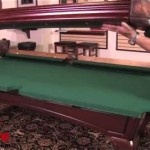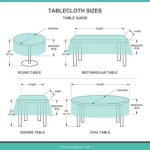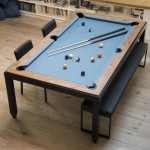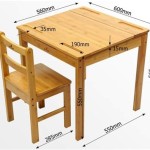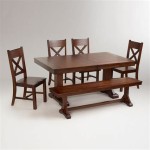Regulation Size Pool Table Dimensions Chart: A Comprehensive Guide
Understanding the dimensions of a regulation size pool table is crucial for both casual players and serious billiards enthusiasts. Adherence to specific size standards ensures consistent gameplay, facilitates skill development, and is paramount for competitive events. This article provides a detailed overview of the standard dimensions for pool tables, covering various aspects from the overall size to the specific measurements of essential components.
The World Pool-Billiard Association (WPA) and other governing bodies establish the regulations for pool table dimensions used in professional tournaments. These standards aim to create a level playing field, ensuring that all players compete under the same conditions, regardless of location. While variations exist outside of these regulated spaces, the regulation sizes are generally accepted as the benchmark for quality and gameplay experience.
Choosing the right size pool table for a specific space is also a key consideration. Factors such as room dimensions, playing skill, and intended use all contribute to determining the most appropriate table size. Careful planning and consideration of these factors will ensure optimal enjoyment and functionality of the billiards setup.
Overall Pool Table Dimensions
The term "regulation size" primarily refers to the playing surface of the pool table, not the overall exterior dimensions. Regulation pool tables come in several sizes, but the most common are 9-foot and 8-foot tables. These measurements refer to the length of the playing surface between the cushions.
A 9-foot pool table has a playing surface of 50 inches by 100 inches (127 cm by 254 cm). This is the standard size used in most professional tournaments and is favored by experienced players due to the challenging shot angles and greater distance between balls. The overall exterior dimensions of a 9-foot table will typically be larger than the playing surface, accounting for the width of the rails and cushions.
An 8-foot pool table offers a slightly smaller playing surface of 44 inches by 88 inches (112 cm by 224 cm). This size is popular for home use and recreational settings, providing a good balance between playability and space requirements. While still challenging, an 8-foot table is more forgiving for less experienced players due to the shorter distances and easier angles.
There are also 7-foot pool tables, also known as bar boxes. Their dimensions are 39 inches by 78 inches (99 cm x 198 cm). These are primarily used in commercial settings such as bars and pubs, as their smaller size accommodates tighter spaces and allows for easier gameplay with a larger group of players.
It is crucial to understand that these measurements pertain to the playing surface, which is the area enclosed by the cushions. The overall exterior dimensions of the pool table, including the rails, frame, and legs, will be larger depending on the specific model and design. To accurately determine the space needed for a pool table, these external dimensions should be accounted for.
Key Components and Their Dimensions
Beyond the overall size, several other components of a pool table have standard dimensions that contribute to the overall gameplay experience. These components include the height of the table, the size of the cushions, and the diameter of the pockets.
The standard height of a pool table, measured from the floor to the top of the playing surface, is between 29.25 inches and 31 inches (74.3 cm and 78.7 cm). This height ensures a comfortable playing position for most adults, allowing them to easily reach over the table and execute shots. Deviations from this height can significantly impact gameplay and comfort.
Cushions, also known as rails, are the rubber bumpers that line the inside of the pool table. They play a vital role in rebounding the balls during gameplay. The height of the cushions is standardized to ensure consistent ball rebound. The height of the cushion nose - the point where the cushion contacts the ball - should be approximately 63.5% of the diameter of the balls used. For standard 2 1/4-inch (57.2 mm) pool balls, this equates to a cushion nose height of approximately 1.425 inches (36.2 mm).
The pocket openings of a pool table adhere to specific size standards. The corner pockets are typically wider than the side pockets. These widths are measured from tip to tip of the cushion faces at the pocket openings. According to WPA regulations, the corner pocket openings should measure between 4.5 inches and 4.625 inches (11.4 cm and 11.7 cm), and the side pocket openings should measure between 5 inches and 5.125 inches (12.7 cm and 13.0 cm). These dimensions ensure that shots can be made with reasonable accuracy while still providing a degree of challenge.
The cloth covering the playing surface, typically made of billiard fabric, is another crucial component. While there is no specific dimensional regulation for the cloth itself, the quality and tightness of the cloth significantly impact ball speed and trajectory. The cloth must be stretched tautly over the slate bed to provide a smooth and consistent playing surface.
Room Size Requirements for Optimal Play
The dimensions of the room in which the pool table is placed are just as important as the table's size. Adequate space around the table allows players to comfortably maneuver and execute shots from various angles. Insufficient space can lead to awkward stances and restricted movements, hindering gameplay and potentially damaging the table or surroundings.
To determine the minimum room size required for a pool table, consider the length of a standard pool cue, which is typically 58 inches (147 cm). A general rule of thumb is to add twice the cue length to each dimension of the pool table's playing surface. This calculation provides the minimum room size required for unrestricted play.
For a 9-foot pool table with a playing surface of 50 inches by 100 inches, the minimum room size would be approximately 14 feet by 18 feet (4.3 m by 5.5 m). This allows for a full cue length on all sides of the table. However, it is advisable to add even more space if possible, especially if multiple players will be using the table simultaneously.
For an 8-foot pool table with a playing surface of 44 inches by 88 inches, the minimum room size would be approximately 13 feet by 17 feet (4.0 m by 5.2 m). Again, this is a minimum requirement, and additional space is always beneficial.
When assessing room size, it is crucial to consider any obstructions, such as walls, furniture, or support columns. These obstructions can further restrict movement and necessitate even larger room dimensions. It is also important to factor in the potential for angled shots, which may require additional space for players to maneuver around the table.
Beyond the minimum space requirements, consider the overall layout of the room. Ensure that there is adequate lighting to illuminate the playing surface evenly. Position the table away from high-traffic areas to minimize distractions and potential collisions. The strategic placement of seating and storage for cues and other accessories can also enhance the overall playing experience.
Finally, take into account the ceiling height. While not directly related to the table dimensions, a low ceiling can impede certain shots, particularly those that require raising the cue at a steep angle. A standard ceiling height of at least 8 feet (2.4 m) is generally recommended for pool table rooms.
By carefully considering both the dimensions of the pool table and the available space within the room, one can create an optimal playing environment that enhances both the enjoyment and the skill development of billiards.

Pool Table Room Size Guide Chart Birkbeck Billiards

How To Measure For A Pool Table Fodor Billiards

Pin By Antares Arts On Infographics Family Homes Sustaility And Real Estates Pool Table Dimensions

Pool Table Room Size Guide Chart Birkbeck Billiards

How Tall Is A Standard Pool Table Height Guide Bar 101

Drawknife Alpine Madison Billiard Table

Pool Table Building Plans
.jpg?strip=all)
What Size Is A Pool Table

Pool Table Room Size Calculator

Supreme Pool Table Room Size Information


